The Effect of Deposited Dust on SCC and Crevice Corrosion of AISI 304L Stainless Steel in Saline Environment
Abstract
:1. Introduction
2. Experimental Procedure
3. Results and Discussion
3.1. Surface Morphology Analysis
3.2. EDS and EBSD Analyses
4. Conclusions
- (1)
- No cracks were observed on the samples deposited with a 0.1 g/m2 chloride concentration at a 45% and 55% RH. However, discontinuous cracks were found on those samples exposed to a 70% relative humidity, which is the highest RH of the three. This could be accounted for by the fact that the chloride concentration of 0.1 g/m2 was so low that it could not initiate stress corrosion cracking in the specimens tested at lower relative humidity levels (45% and 55% RH).
- (2)
- When the chloride concentration for the specimens was increased to 1 g/m2, there were still no SCC cracks on those specimens exposed to RH = 45% whereas those exposed to 55% and 70% RHs cracked. Furthermore, discrete SCC cracks were found on those specimens exposed to a 55% RH, whereas continuous SCC cracks were observed on those exposed to a relative humidity of 70%. This could be interpreted by finite chloride being transported into the crevice sites at a 45% RH for the specimens deposited with 1 g/m2. The observation that the crack region had obviously been enriched with chloride provides evidence to verify the aforementioned argument.
- (3)
- The results suggest that the relative humidity threshold was between 55% and 70% RH for the SCC initiation of 304L stainless steel with an as-machined surface and a 0.1 g/m2 chloride concentration at 45 °C, whereas the relative humidity threshold decreased to between 45% and 55% RH when the chloride concentration for the specimens increased to 1 g/m2.
- (4)
- The specimens with a chloride concentration of 1 g/m2 had obvious crevice corrosion only at those regions deposited with white emery.
- (5)
- The 304L stainless steel specimens with an as-machined surface tested at 45 °C were cracked with the TGSCC mode, which was substantiated by the results of EBSD.
Author Contributions
Funding
Institutional Review Board Statement
Informed Consent Statement
Data Availability Statement
Conflicts of Interest
References
- Saegusa, T.; Yagawa, G.; Aritomi, M. Topics of research and development on concrete cask storage of spent nuclear fuel. Nucl. Eng. Des. 2008, 238, 1168–1174. [Google Scholar] [CrossRef]
- Aoyama, T.; Sugawara, Y.; Muto, I.; Hara, N. In situ monitoring of crevice corrosion morphology of type 316 L stainless steel and repassivation behavior induced by sulfate ions. Corros. Sci. 2017, 127, 131–140. [Google Scholar] [CrossRef]
- Li, Y.Z.; Wang, X.; Zhang, G.A. Corrosion behavior of 13 Cr stainless steel under stress and crevice in 3.5 wt.% NaCl solution. Corros. Sci. 2020, 163, 108290. [Google Scholar] [CrossRef]
- Han, D.; Jiang, Y.; Shi, C.; Deng, B.; Li, J. Effect of temperature, chloride ion and pH on the crevice corrosion behavior of SAF 2205 duplex stainless steel in chloride solutions. J. Mater. Sci. 2012, 47, 1018–1025. [Google Scholar] [CrossRef]
- Cook, C.; Padovani, C.; Davenport, A.J. Effect of nitrate and sulfate on atmospheric corrosion of 304 L and 316 L stainless steels. J. Electron. Soc. 2017, 164, C146–C163. [Google Scholar] [CrossRef] [Green Version]
- Meyer, R.M.; Pardini, A.; Cuta, J.; Adkins, H.; Casella, A.; Qiao, A.; Larche, M.R.; Diaz, A.; Doctor, S.R. NDE to Manage Atmospheric SCC in Canister for Dry Storage of Spent Fuel: An Assessment; PNNL-22495 401001060; Pacific Northwest National Laboratory: Richland, WA, USA, 2013. [Google Scholar]
- Schoell, R.; Xi, L.; Zhao, Y.; Wu, X.; Yu, Z.; Kenesei, P.; Almer, J.; Shayer, Z.; Kaoumi, D. In situ synchrotron X-ray tomography of 304 stainless steels undergoing chloride-induced stress corrosion cracking. Corros. Sci. 2020, 170, 108687. [Google Scholar] [CrossRef]
- Wu, X. On residual stress analysis and microstructural evolution for stainless steel type 304 spent nuclear fuel canisters weld joint: Numerical and experimental studies. J. Nucl. Mater. 2020, 534, 152131. [Google Scholar] [CrossRef]
- Yeom, H.; Dabney, T.; Pocquette, N.; Ross, K.; Pfefferkorn, F.E.; Sridharan, K. Cold spray deposition of 304 L stainless steel to mitigate chloride-induced stress corrosion cracking in canisters for used nuclear fuel storage. J. Nucl. Mater. 2020, 538, 152254. [Google Scholar] [CrossRef]
- Tani, J.I.; Mayuzumi, M.; Hara, N. Stress corrosion cracking of stainless-steel canister for concrete cask storage of spent fuel. J. Nucl. Mater. 2008, 379, 42–47. [Google Scholar] [CrossRef]
- Machuca, L.L.; Bailey, S.I.; Gubner, R.; Watkin, E.L.; Ginige, M.P.; Kaksonen, A.H.; Heidersbach, K. Effect of oxygen and biofilms on crevice corrosion of UNS S31803and UNS N08825 in natural seawater. Corros. Sci. 2013, 67, 242–255. [Google Scholar] [CrossRef]
- Shojaei, E.; Mirjalili, M.; Moayed, M.H. The influence of the crevice induced IR drop on polarization measurement of localized corrosion behavior of 316L stainless steel. Corros. Sci. 2019, 156, 96–105. [Google Scholar] [CrossRef]
- Ahn, T.; Oberson, G.; Depaula, S. Chloride-induced stress corrosion cracking of austenitic stainless steel used for dry storage of spent nuclear fuel. ECS Trans. 2013, 50, 211–226. [Google Scholar] [CrossRef]
- Dong, P.; Scatigno, G.G.; Wenman, M.R. Effect of salt composition and microstructure on stress corrosion cracking of 316 L austenitic stainless steel for dry storage canisters. J. Nucl. Mater. 2021, 545, 152572. [Google Scholar] [CrossRef]
- Wu, G.; Singh, P.M. Effect of elastic stresses on pitting behavior of stainless steel 304. J. Electron. Soc. 2019, 166, C209–C216. [Google Scholar] [CrossRef]
- Islami, N.; Rashid, S.; Ariffin, A.K.; Nuawi, M.Z. Stress corrosion damage on austenitic stainless steel in sodium chloride. Int. J. Automot. Mech. Eng. A 2017, 14, 3824–3836. [Google Scholar] [CrossRef]
- Guo, L.; Zhou, S.; Crocker, L.; Turnbull, A. Initiation sites for cracks developed from pits in a shot-peened 12 Cr martensitic stainless steel. Int. J. Fatigue 2017, 98, 195–202. [Google Scholar] [CrossRef]
- Guo, L.; Mi, N.; Mohammed-Ali, H.; Ghahari, M.; Plessis, A.D.; Cook, A.; Street, S.; Reinhard, C.; Atwood, R.C.; Rayment, T.; et al. Effect of mixed salts on atmospheric corrosion of 304 stainless steel. J. Electrochem. Soc. 2019, 166, C3010–C3014. [Google Scholar] [CrossRef]
- Shoji, S.; Ohnaka, N.; Furutani, Y.; Saitoh, T. Effects of relative humidity on atmospheric stress corrosion cracking of stainless steels. Corros. Eng. 1986, 35, 559–565. [Google Scholar] [CrossRef] [Green Version]
- Scatigno, G.G.; Ryan, M.P.; Giuliani, F.; Wenman, M.R. The effects of prior cold work on the chloride stress corrosion cracking of 304 L austenitic stainless steel under atmospheric condition. Mater. Sci. Eng. A 2016, 668, 20–29. [Google Scholar] [CrossRef]
- Scatigno, G.G.; Dong, P.; Ryan, M.P.; Wenman, M.R. The effects of salt loading on chloride-induced stress corrosion cracking of 304 L austenitic stainless steel under atmospheric conditions. Materialia 2019, 8, 100509. [Google Scholar] [CrossRef]
- Cook, A.B.; Lyon, S.B.; Stevens, N.P.C.; Gunther, M.; McFiggans, G.; Newman, R.C.; Engelberg, D.L. Assessing the risk of under-deposit chloride-induced stress corrosion cracking in austenitic stainless steel nuclear waste containers. Corros. Eng. Sci. Technol. 2014, 49, 529–534. [Google Scholar] [CrossRef]
- Prosek, T.; Iverson, A.; Taxsen, C.; Thierry, D. Low temperature on stress corrosion cracking of stainless steels in the atmosphere in the presence of chloride deposits. Corrosion 2009, 65, 105–117. [Google Scholar] [CrossRef]
- Yeh, C.P.; Tsai, K.C.; Huang, J.Y. Influence of chloride concentration on stress corrosion cracking and crevice corrosion of austenitic stainless steel in saline environments. Materials 2020, 13, 5640. [Google Scholar] [CrossRef] [PubMed]
- Ornek, C.; Engelberg, D.L. Toward understanding the effects of strain and chloride deposition density on atmospheric chloride-induced stress corrosion cracking of type 304 austenitic stainless steel under MgCl2 and FeCl3: MgCl2 droplets. Corrosion 2019, 75, 167–182. [Google Scholar] [CrossRef] [Green Version]
- Masuda, H. SKFM observation of SCC on SUS304 stainless steel. Corros. Sci. 2007, 49, 120–129. [Google Scholar] [CrossRef]
- Qiao, L.J.; Gao, K.W.; Volinsky, A.A.; Li, X.Y. Discontinuous surface cracks during stress corrosion cracking of stainless steel single crystal. Corros. Sci. 2011, 53, 3509–3514. [Google Scholar] [CrossRef]
- Acharyya, S.G.; Khandelwal, A.; Kain, V.; Kumar, A.; Samajdar, I. Surface working of 304 L stainless steel: Impact on microstructure, electrochemical behavior and SCC resistance. Mater. Charact. 2012, 72, 68–76. [Google Scholar] [CrossRef]
- Li, J.X.; Chu, W.Y.; Wang, Y.B.; Qiao, L.J. In situ TEM study of stress corrosion cracking of austenitic stainless steel. Corros. Sci. 2003, 45, 1355–1365. [Google Scholar] [CrossRef]
- Zhu, L.K.; Yu, Y.; Li, J.X.; Qiao, L.J.; Volinsky, A.A. Stress corrosion cracking under low stress: Continuous or discontinuous cracks? Corros. Sci. 2014, 80, 350–358. [Google Scholar] [CrossRef]
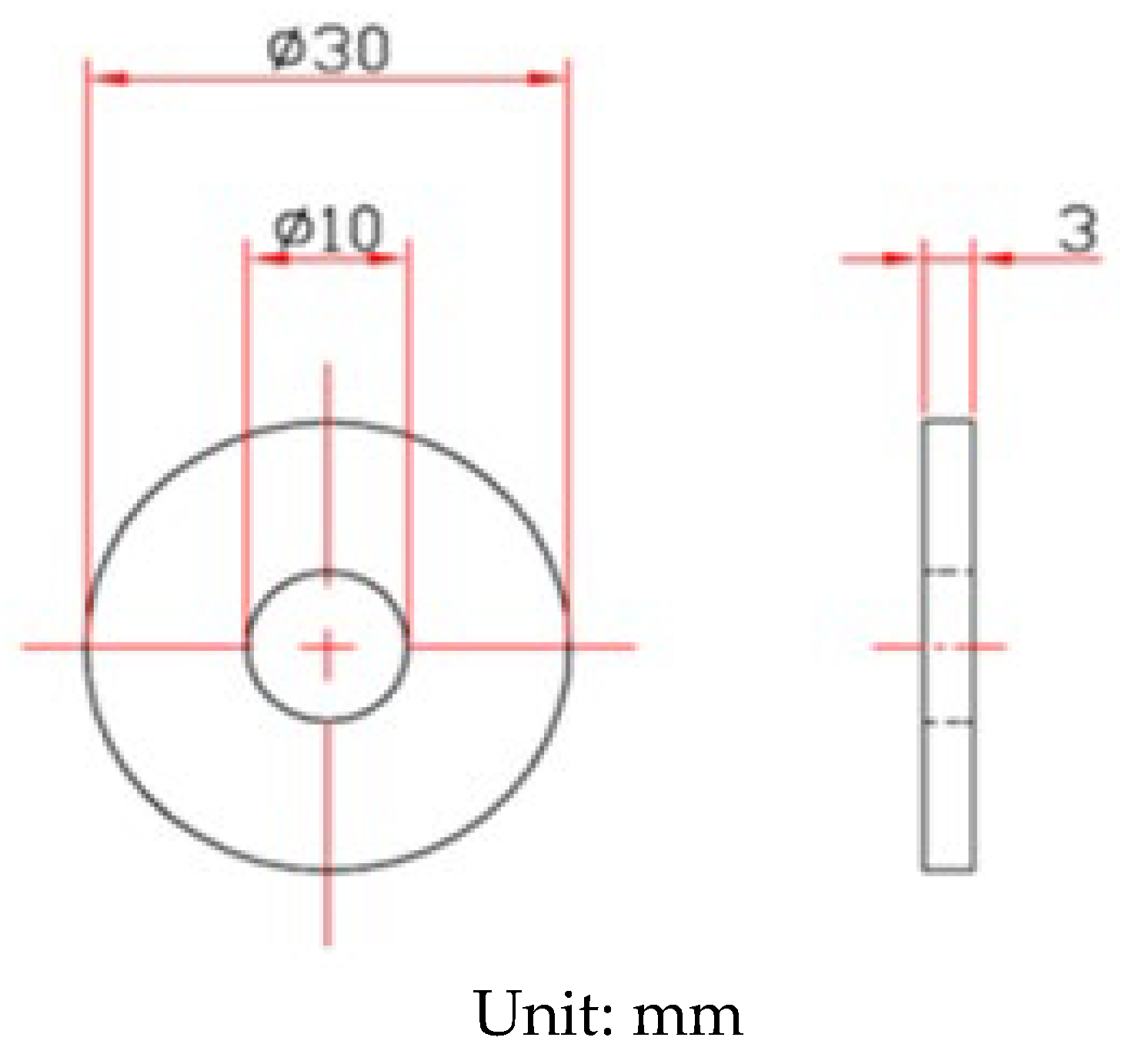
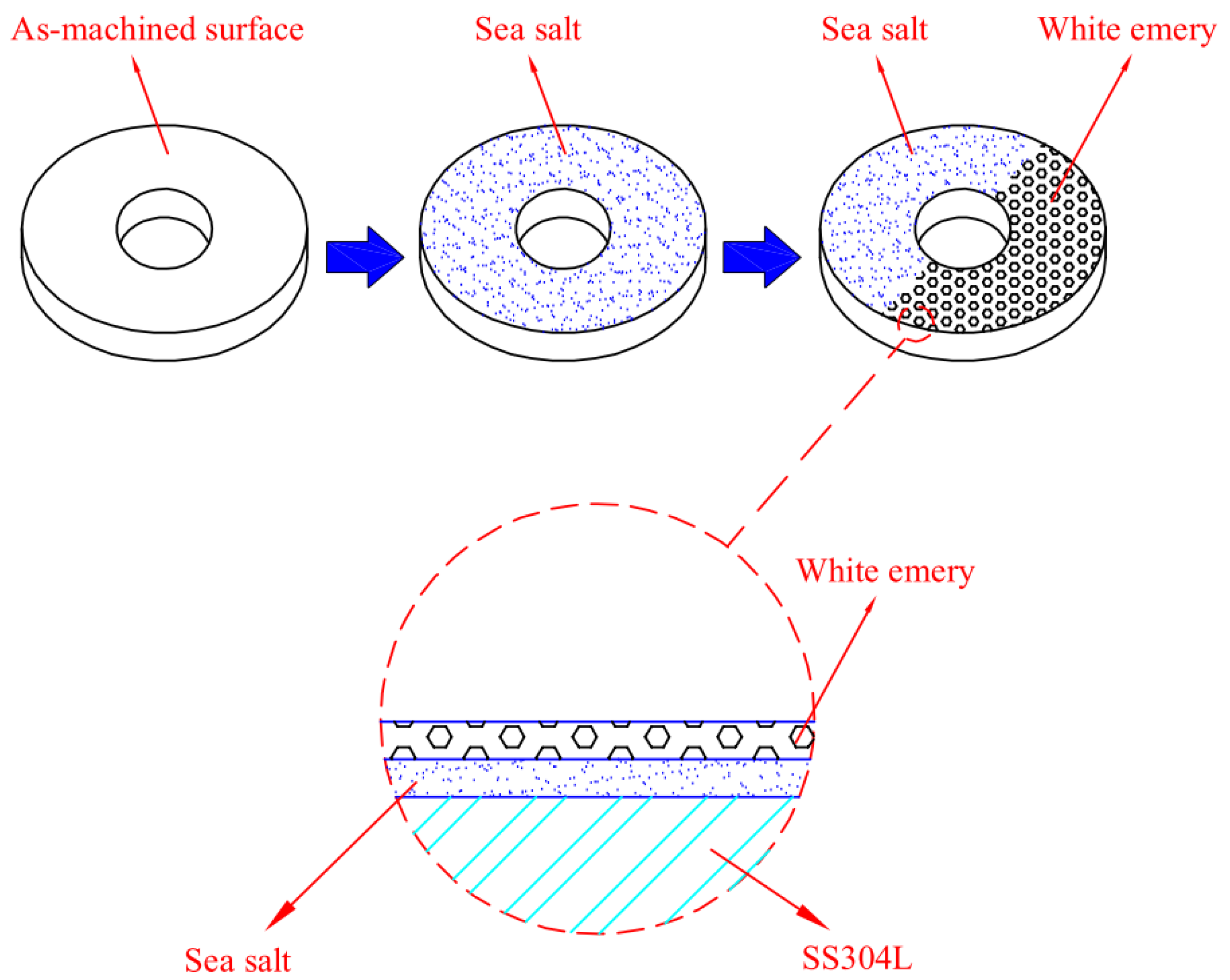
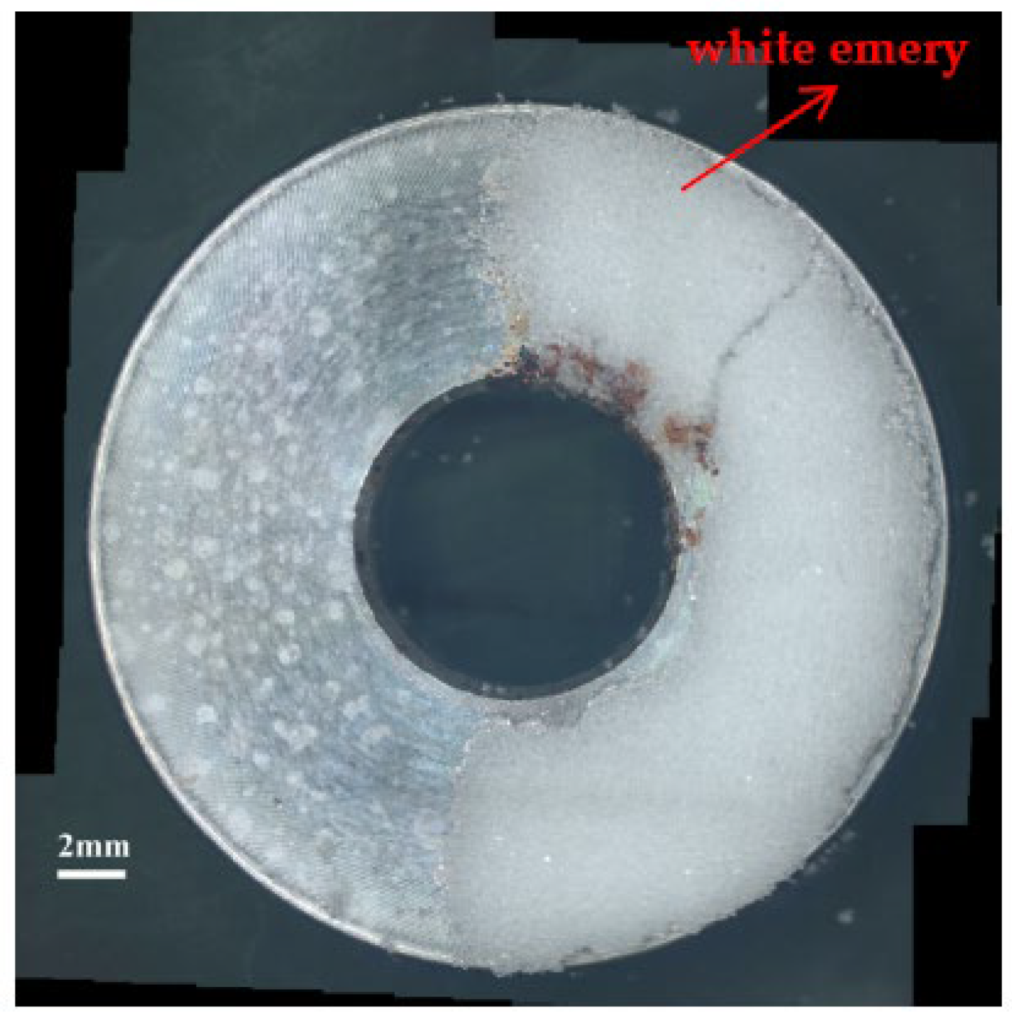
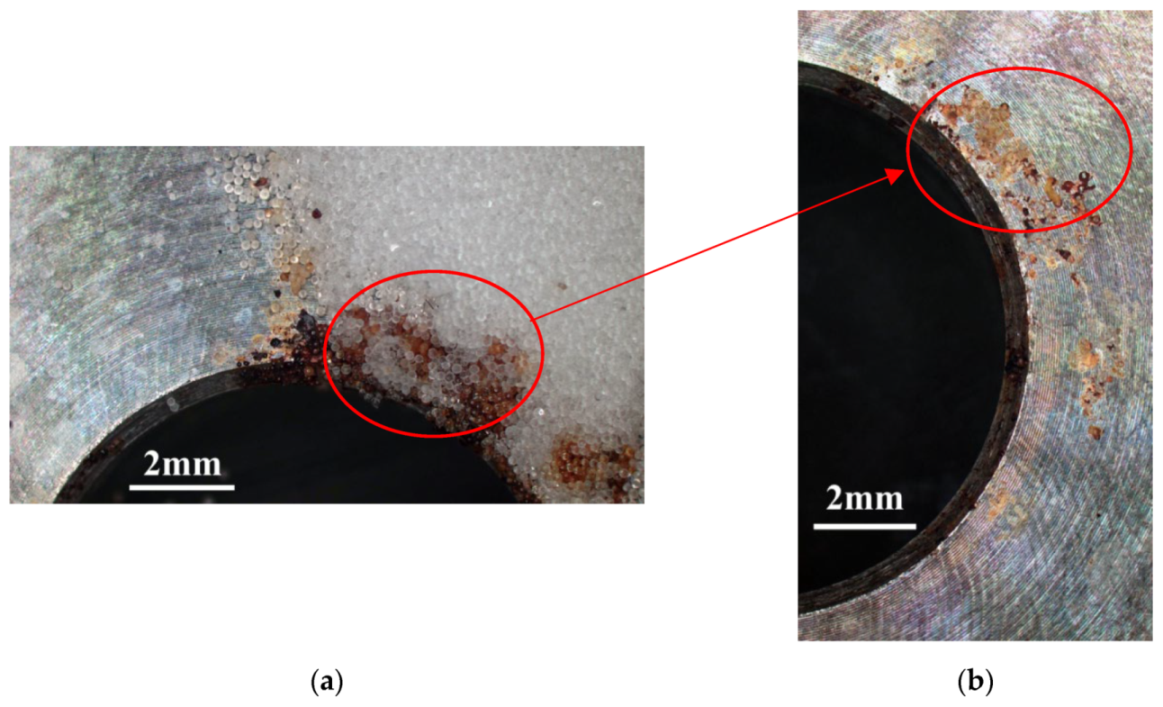
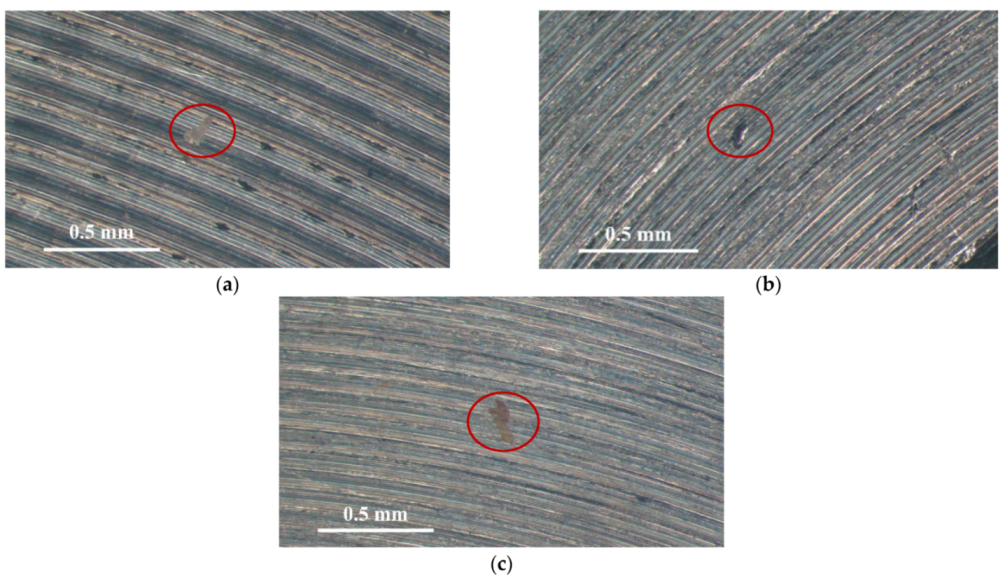
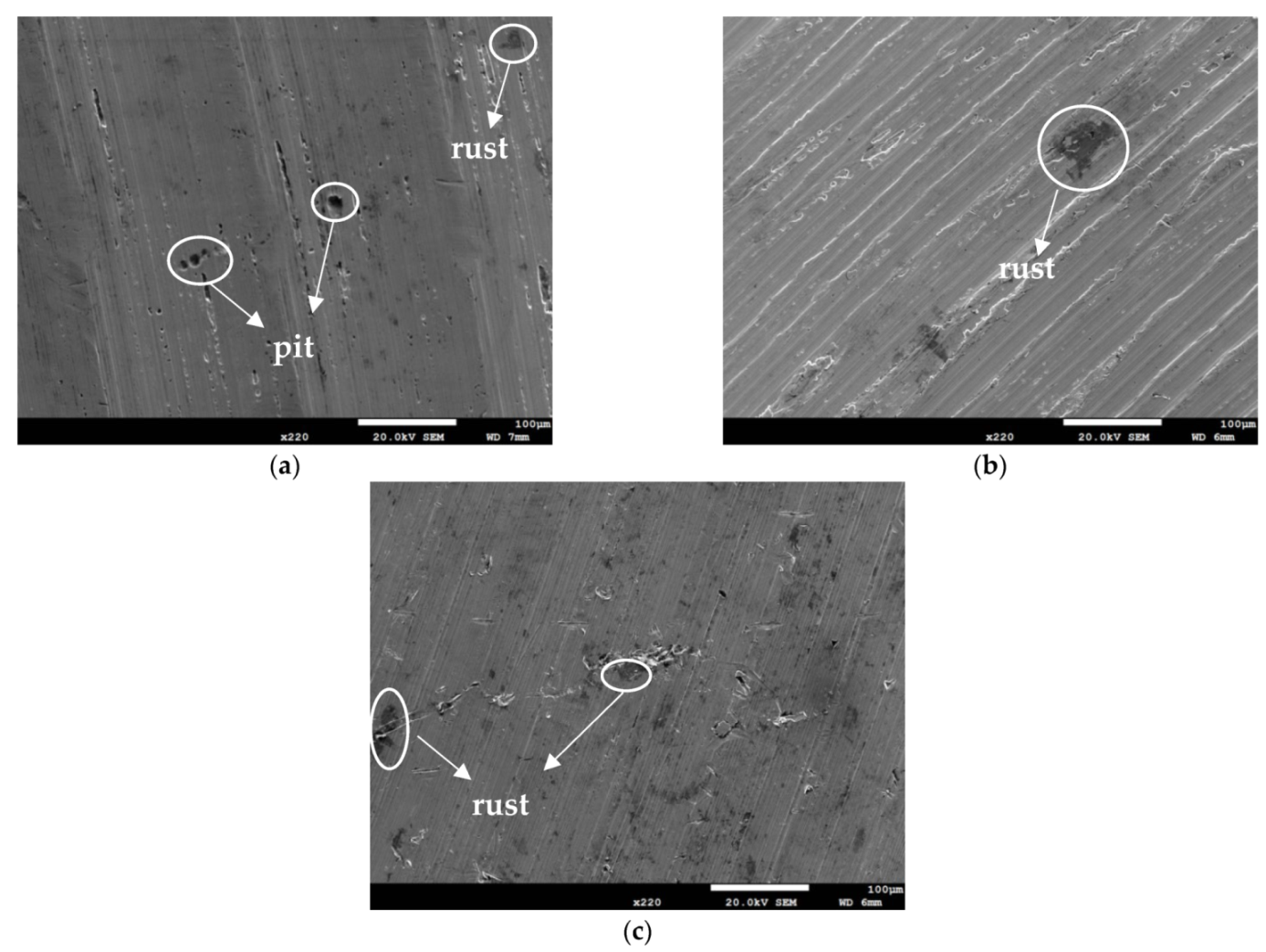
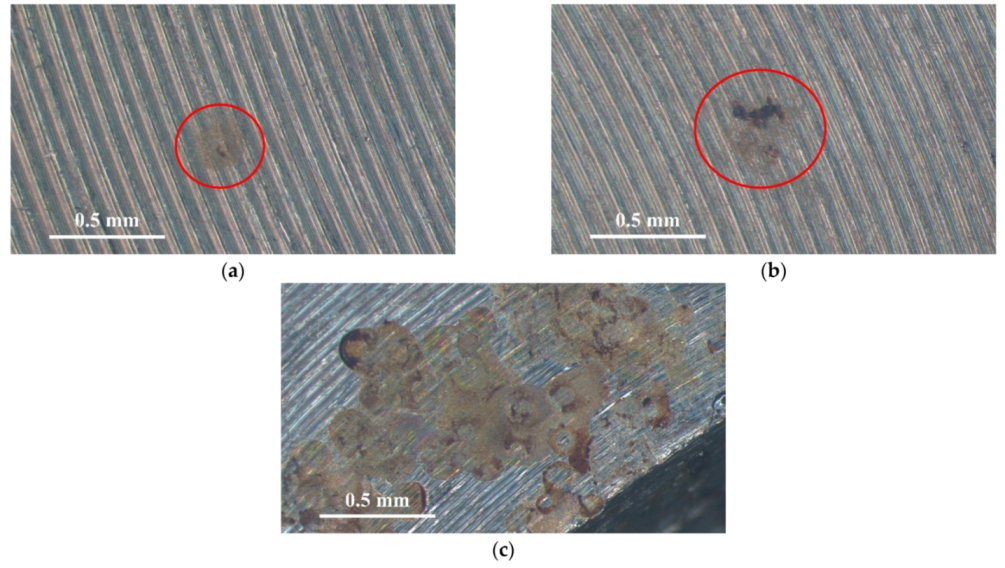



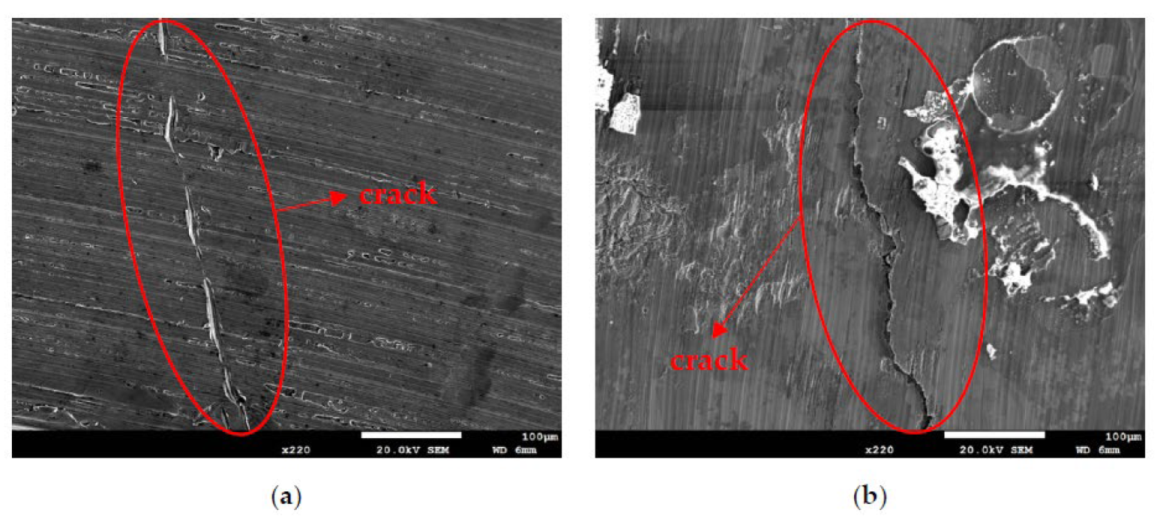

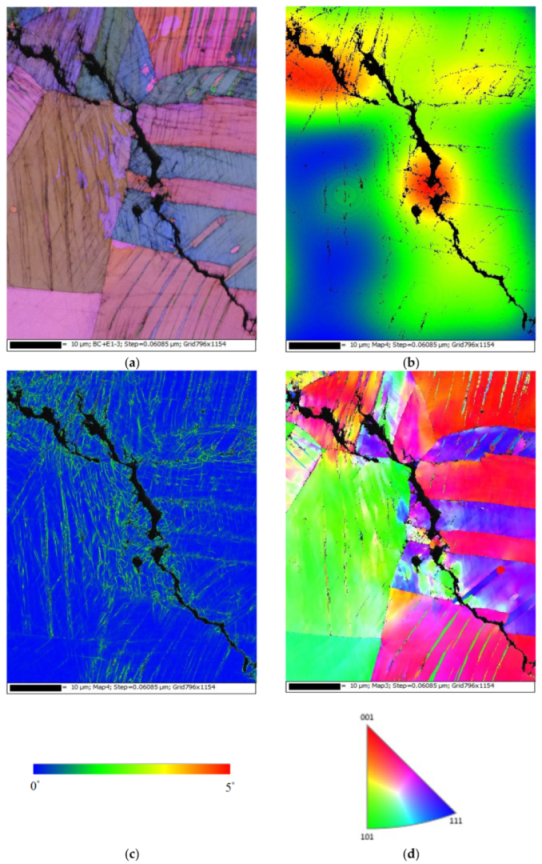
| Element | C | S | Si | Ni | Cr | Mn | Fe |
|---|---|---|---|---|---|---|---|
| wt.% | 0.017 | 0.0290 | 0.450 | 9.000 | 18.000 | 1.540 | Bal. |
| Composition | NaCl | Na2SO4 | MgCl2 | KCl | CaCl2 | NaHCO3 | KCl | KBr | SrCl2 | H3BO3 |
|---|---|---|---|---|---|---|---|---|---|---|
| wt.% | 58.490 | 9.750 | 26.460 | 1.645 | 2.765 | 0.477 | 1.645 | 0.238 | 0.095 | 0.071 |
| Location | O | S | Cl | Mn | Cr | Ni | Fe |
|---|---|---|---|---|---|---|---|
| A | 0.70 | 0.00 | 0.00 | 1.70 | 18.6 | 8.50 | 70.4 |
| B | 17.5 | 0.80 | 1.20 | 1.50 | 23.5 | 7.20 | 48.3 |
| C | 42.6 | 0.90 | 4.10 | 1.30 | 10.6 | 6.10 | 34.4 |
| D | 30.0 | 1.80 | 3.60 | 2.20 | 39.1 | 1.90 | 21.3 |
| E | 15.9 | 0.30 | 0.20 | 1.90 | 16.2 | 7.30 | 58.3 |
Publisher’s Note: MDPI stays neutral with regard to jurisdictional claims in published maps and institutional affiliations. |
© 2021 by the authors. Licensee MDPI, Basel, Switzerland. This article is an open access article distributed under the terms and conditions of the Creative Commons Attribution (CC BY) license (https://creativecommons.org/licenses/by/4.0/).
Share and Cite
Yeh, C.-P.; Tsai, K.-C.; Huang, J.-Y. The Effect of Deposited Dust on SCC and Crevice Corrosion of AISI 304L Stainless Steel in Saline Environment. Materials 2021, 14, 6834. https://doi.org/10.3390/ma14226834
Yeh C-P, Tsai K-C, Huang J-Y. The Effect of Deposited Dust on SCC and Crevice Corrosion of AISI 304L Stainless Steel in Saline Environment. Materials. 2021; 14(22):6834. https://doi.org/10.3390/ma14226834
Chicago/Turabian StyleYeh, Chun-Ping, Kun-Chao Tsai, and Jiunn-Yuan Huang. 2021. "The Effect of Deposited Dust on SCC and Crevice Corrosion of AISI 304L Stainless Steel in Saline Environment" Materials 14, no. 22: 6834. https://doi.org/10.3390/ma14226834
APA StyleYeh, C.-P., Tsai, K.-C., & Huang, J.-Y. (2021). The Effect of Deposited Dust on SCC and Crevice Corrosion of AISI 304L Stainless Steel in Saline Environment. Materials, 14(22), 6834. https://doi.org/10.3390/ma14226834





